Exploring Athens’ Flourishing English Comedy Scene
At the Athens English Comedy Club,...
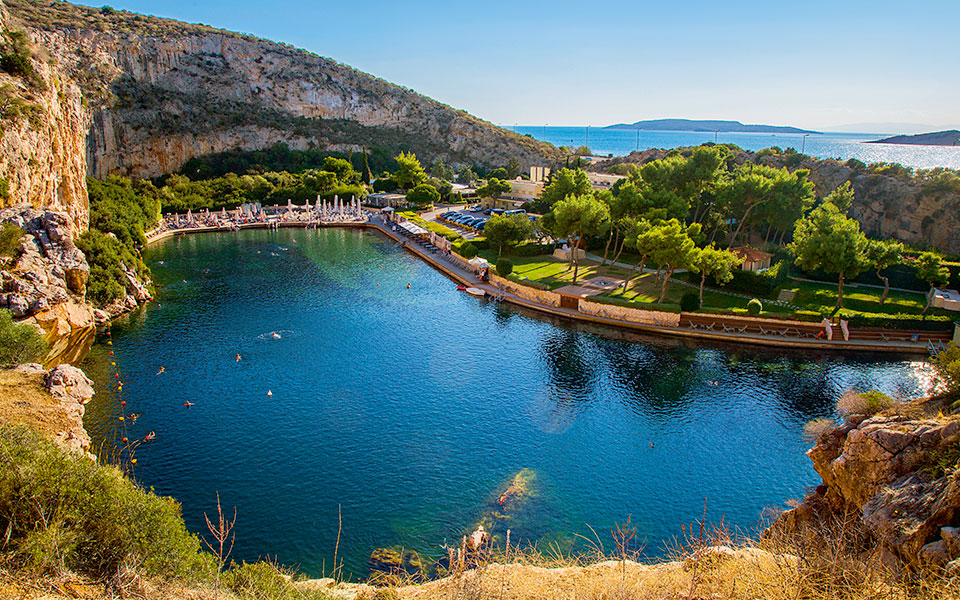
Vouliagmeni Lake
© Perikles Merakos
Ideal for a winter swim, this is one of the jewels of the Athens Riviera – the stretch of coastline that begins at Flisvos Marina, about a half-hour’s drive from the city center, and extends all the way to Cape Sounio.
“I have been coming to the lake every day for about 40 years,” says Nikos, a fit-looking, grey-haired man, before stripping down to his swimming suit and diving in. It’s already November, but that doesn’t seem to bother him – nor any of the other swimmers who are enjoying the deep blue-green waters, mirroring the sheer cliffs and pine trees surrounding the lake. Here, the water temperature ranges between 22 and 29˚C all year round.
Vouliagmeni Lake is located 25k southeast of Athens and can be reached by buses No. 115, 116, 117 and 122 (download the OASA Telematics app for public transportation info) or the KTEL Intercity bus for Sounio (Limni stop).
Open daily 8:00-17:00, Admission Mon-Fri €12, weekends €13
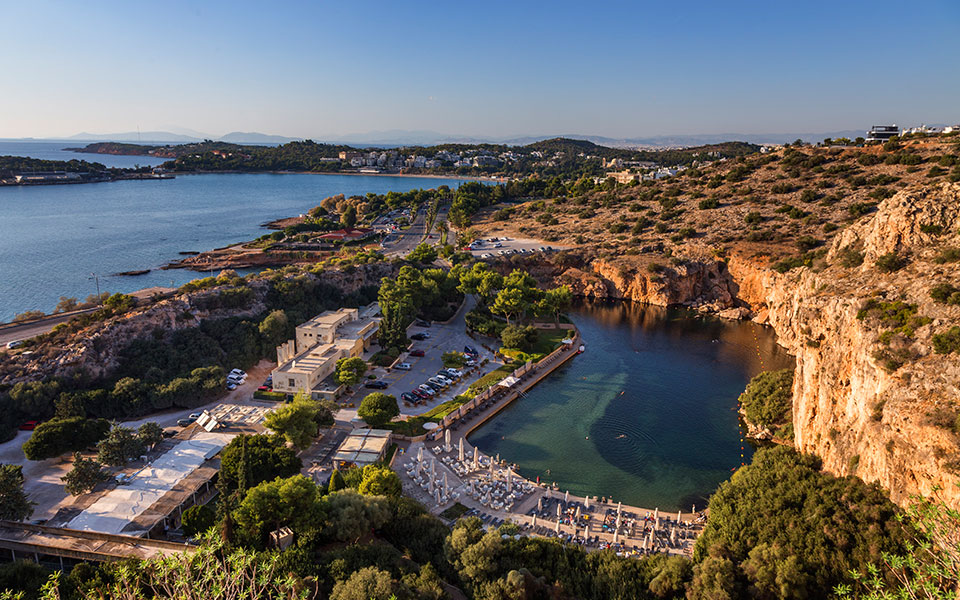
Vouliagmeni Lake
© Perikes Merakos
With its therapeutic properties, Vouliagmeni Lake – a Natura 2000-protected site – is a revelation. Nestled in an idyllic setting surrounded by dramatic cliffs, the lake is fed by underwater natural springs that flow through a subterranean system of tunnels and caverns. It also communicates with the sea, meaning that its waters are continually refreshed and slightly salty.
For decades the lake has mainly attracted older swimmers and individuals with rheumatic, musculoskeletal or other ailments, but in recent years that has begun to change. “The younger generation prefers a healthier way of life and is attracted to what is offered by nature. We now have visitors of all ages, both locals and tourists,” notes Marianthi Vavoulaki, head of PR. Indeed, during our visit we see a diverse crowd from yoga practitioners to visitors just enjoying the autumn sunshine or exploring the lakebed with the aid of masks and snorkels.
Even if you end up here without a swimsuit, try ditching your shoes, rolling up your trousers and wading into the shallows. The lake’s “fish spa” is one of its most popular features. Stand still and let the small, black Garra rufa fish nibble your feet, giving you a massage and a natural exfoliation treatment.
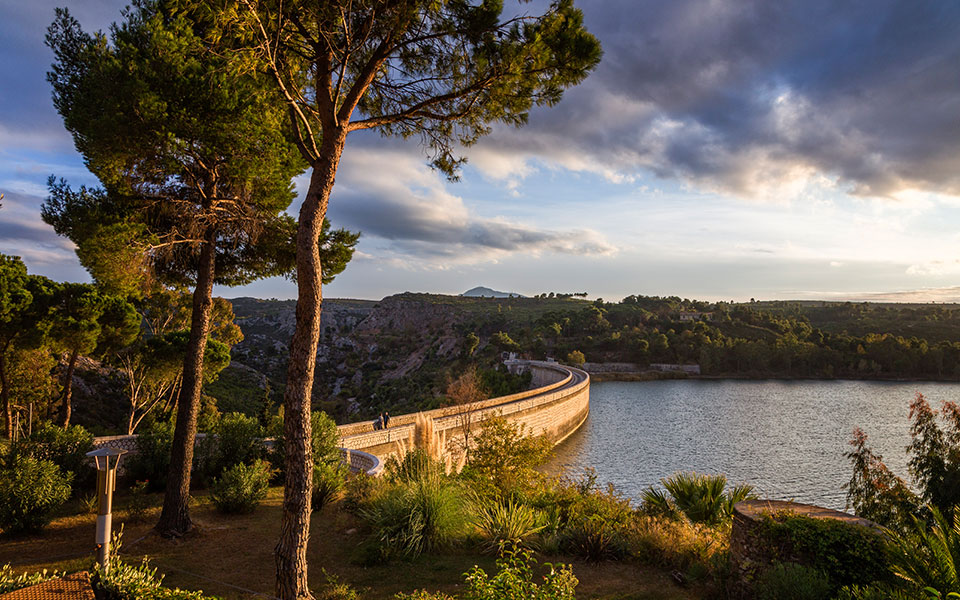
The Marathon Dam
© Perikles Merakos
An artificial lake of great ecological importance, a rare forest of stone pine, a popular sandy beach and a host of impressive archaeological sites make this area ideal for a nearby excursion.
Marathon has long been known for the Greeks’ victorious battle against the Persians in 490 BC. Thus, an ideal starting point for one’s tour of the area is the mound of the Athenians, a 10m-high tumulus erected after the battle. This hill and the adjacent bronze statue of the Greek commander Miltiades mark the spot of a large funeral pyre where 192 dead Athenian warriors were ceremonially cremated and interred.
About 5k from the tumulus, one finds the Marathon Museum, near which lies the smaller burial mound of the Plataeans. On the right, as you approach, a modern exhibition building preserves the archaeological site of the prehistoric, Early Helladic cemetery at Tsepi (2.5k from the museum).
Marathon is located 47k northeast of Athens and can be reached via the Athens-Lamia National Road (exit Aghios Stefanos)
Archaeological Museum of Marathon
Tel (+30) 2294.055.155, οpen Tue-Sun 8:00-15:00
Ticket for the museum and site €3 (November-March).
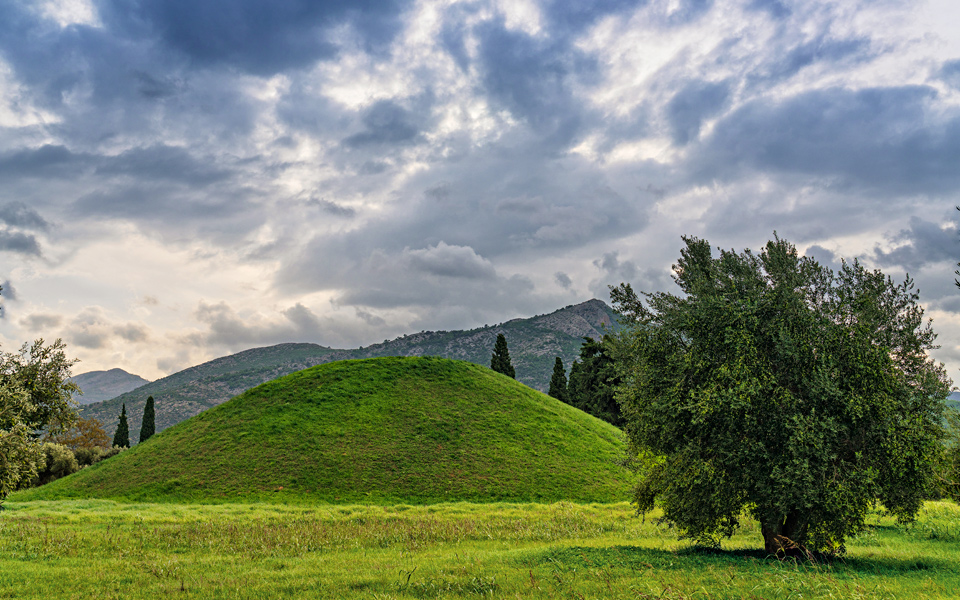
Mound of the Athenians
© Perikles Merakos
Visitors can continue to follow the historical thread at the Sanctuary of the Egyptian Gods; a Roman-era installation erected ca. AD 160 by the well-known sophist, philanthropist and native of Marathon, Herodes Atticus. It can be found near the seafront church of Aghia Kyriaki, in the Brexiza area. Also worth seeing are the marble ruins of Herodes Atticus’ unique nymphaeum (water display), at the start of the Oinoi Gorge near Marathon village, flanked by a three-storied medieval watchtower (12th c.) and a Frankish chapel (Holy Apostles, 13th c.).
Nature walkers will appreciate a well-signposted trail network that also begins here, with one of the paths following an ancient road, and another leading through the gorge to the foot of the Marathon Dam. The lake formed by this impressive marble structure, built in 1926-29, was Athens’ main source of water for decades; today, the area is ideal for walks.
After enjoying the view, head downhill to Schinias National Park (a Natura 2000 site), covering an area of 1,400 hectares beside the sea. Stroll through the pine forest and along the beach – or admire the wetlands, thick with reeds and other vegetation, from the elevated observatory at Megalo Elos. Afterwards you can either head north to the picturesque archaeological site of Rhamnous, or south to Nea Makri where the pedestrian promenade, a favorite among locals, is lined with cafés and ouzeries.
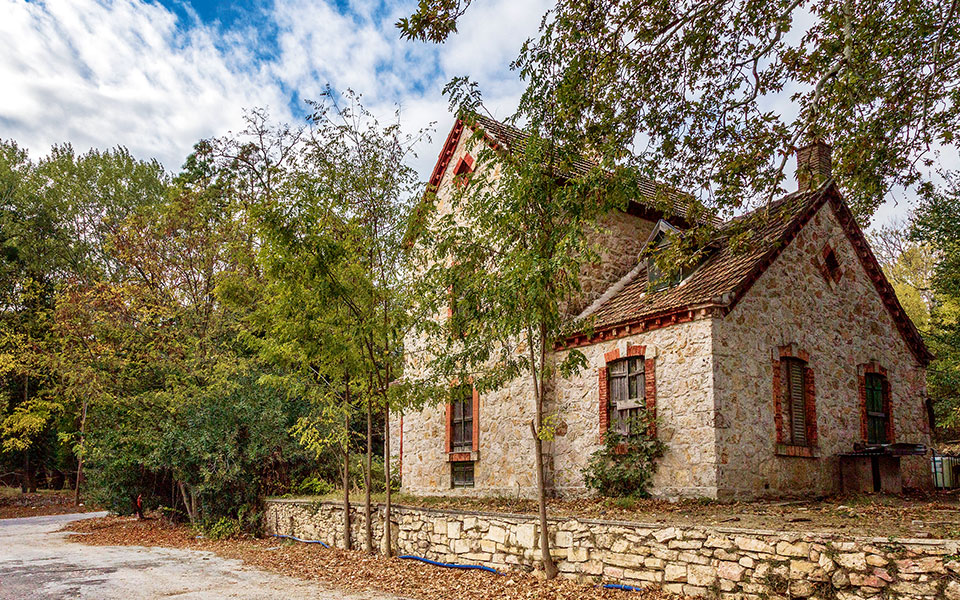
Tatoi Estate
© Perikles Merakos
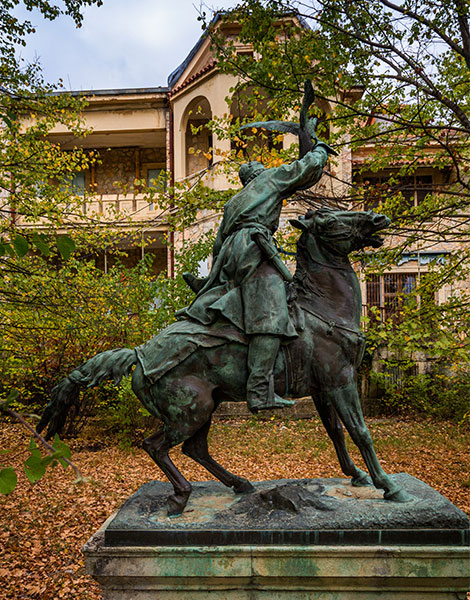
Tatoi Estate
© Perikles Merakos
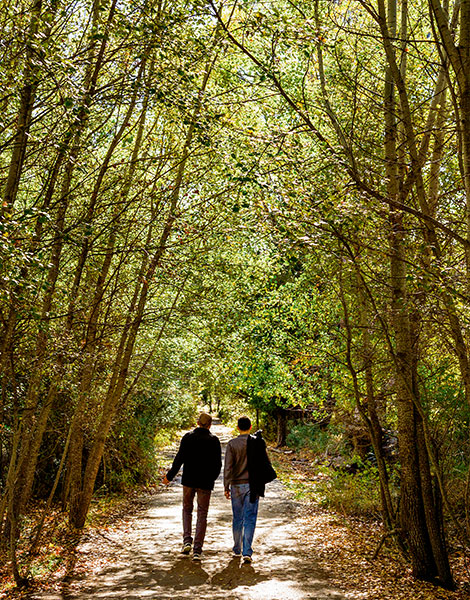
Parnitha
© Perikles Merakos
Canyoning, rock climbing and skiing less than an hour’s drive from Athens? Even for locals, any visit to this national park is a revelation.
If the weather is good and you just want to enjoy a picnic in nature, designated areas can be found on the mountain, within clearings or beside springs and small chapels. If it’s action you crave, there is a world of choices: hiking or cycling on marked paths, canyoning, winter downhill skiing and, of course, rock-climbing – Mikri Varasova, Korakofolia and Petra are the most popular climbing spots, while more experienced climbers can attempt to conquer the 100-150m-tall rocks of Arma and Flambouri. The Bafi and Flambouri refuges will provide all you need for rock climbing – they also rent bicycles and serve coffee and food.
To get to the top of Mt Parnitha, you can either take the scenic road from the Thrakomakedones suburb or ride the cable car up to the Regency Casino Mont Parnes. If you choose to hike any of the trails (the 2-hour Aghia Triada-Skipiza-Mola and the Bafi-Houni Gorge-Thrakomakedones paths are outstanding), you are likely to encounter the red deer that inhabit the mountain, which is also home to over 40 other species of mammals, 132 species of birds and around 1,100 species of plants.
Tatoi is 15k from downtown and can be reached by the Athens-Thessaloniki National Road (Varybobi exit).
Open daily until sunset, admission free.
The Tatoi Friends Association offers tours for groups upon request, tel (+30) 6975.947.248
Mt Parnitha is 43k from downtown. Flambouri refuge: Yiannis Lykidis, tel (+30) 697.225.6215; Bafi refuge: Stephanos Sidiropoulos, tel (+30) 210.240.3556
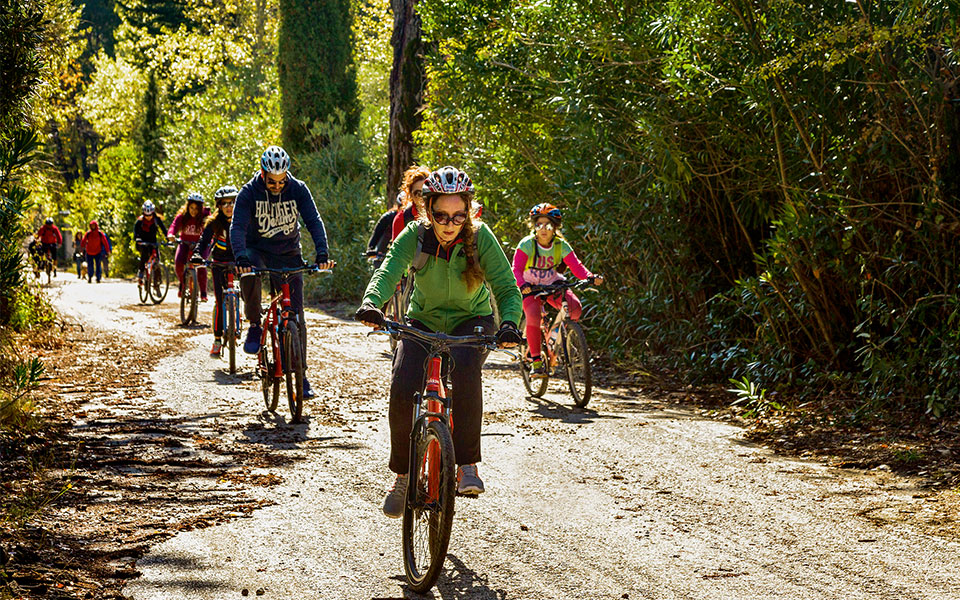
Parnitha
© Perikles Merakos
Along Parnitha’s eastern foothills, dense woodlands can be seen in and around the former royal retreat at Tatoi. Scattered across this private-estate-turned-parkland covered mostly with Aleppo pine, are dozens of protected buildings dating from the 1870s, an extensive network of paths and numerous areas for leisure. The Greek royal family spent their summers here until 1948, later making it their permanent home. In 1973, the Greek state seized the property following a constitutional referendum that abolished the monarchy.
In its heyday, the Tatoi Estate hosted many great figures of the 19th and 20th centuries – including Empress Elisabeth of Austria-Hungary, Tsar Nicholas II, Emperor Haile Selassie, Jackie Kennedy and Richard Nixon – and often lay at the epicenter of historic events. Today, Tatoi stands as a monument to Greece’s history, architecture and natural beauty. You can pick your way through dilapidated buildings, visit the royal cemetery, enjoy a picnic or a bike ride – this is perhaps the most popular cycling destination in Attica.
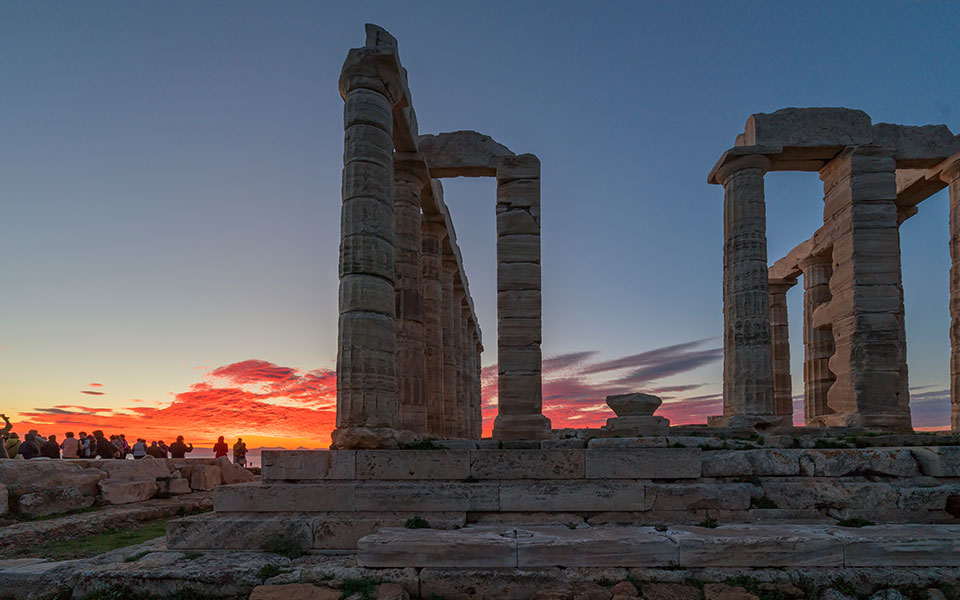
The elegant Temple of Poseidon (450 BC), overlooking the sea, is the undisputed star of one of the most magical locations in Attica. Its famous sunset is in itself a reason to visit.
The southernmost tip of Attica, Cape Sounio, was where mythical King Aegeus of Athens, from whom the Aegean Sea got its name, jumped to his death after seeing his son Theseus’ ship returning from Crete with black sails, believing that he had been killed trying to slay the Minotaur. The cape was particularly strategic in antiquity: the Athenians used it as a coast guard station to control sea lanes to their port, Piraeus, and to Lavrio with its silver mines which were essential to Athenian strength in the 5th c. BC.
Sounio is about 77k southeast of Athens and accessible via the Attiki Odos and Lavrio Highway or Poseidonos-Souniou coastal road. It can be reached by KTEL Intercity Bus (ktelattikis.gr/en/ensounio)
Sounio Archaeological Site, open daily 9:30-sunset, admission €4 (November-March)
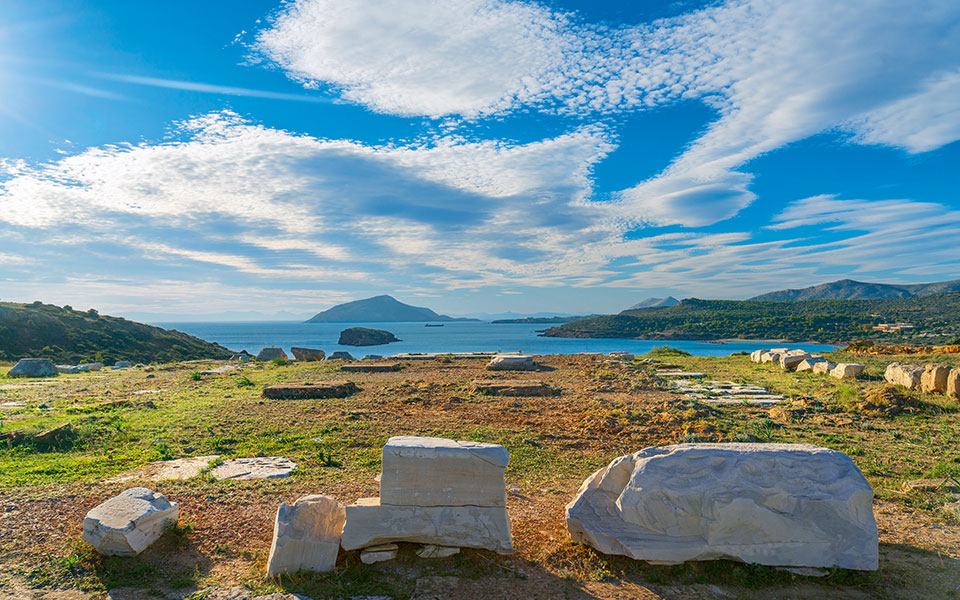
Temple of Athena, Sounio
© Perikles Merakos
At the Sanctuary of Poseidon, you can stroll around the archaeological site, the associated settlement and its stout defensive walls. Sounio National Park covers 3,500 hectares, with the best walks starting from Aghios Konstantinos and taking you through the pine forest where you can visit a ravine called Chaos and numerous ancient mining installations.
Lavrio, a great mining center both in antiquity and in the 19th and 20th centuries, is essentially an open-air museum of industrial archaeology. There, you’ll also see the Technological and Cultural Park with over 40 buildings of unique architectural style, where the processing and sorting of ore was handled; today they operate as cultural centers hosting a variety of events. There is also the Handicraft and Industrial Educational Museum, which can be visited on request. You can enjoy coffee in the main square with its clock and neoclassical buildings or stroll through the fish market and the picturesque Kyprianou district. Be sure stop at nearby Thorikos to admire one of the oldest theaters in Greece.
Lavrio Museum, open Tue-Sun 10:00-15:00, admission €1
Archaeological site of Thorikos, admission free
Handicraft and Industrial Educational Museum, open Mon-Fri 8:30-13:30 (weekends by appointment), tel (+30) 2292.025.575
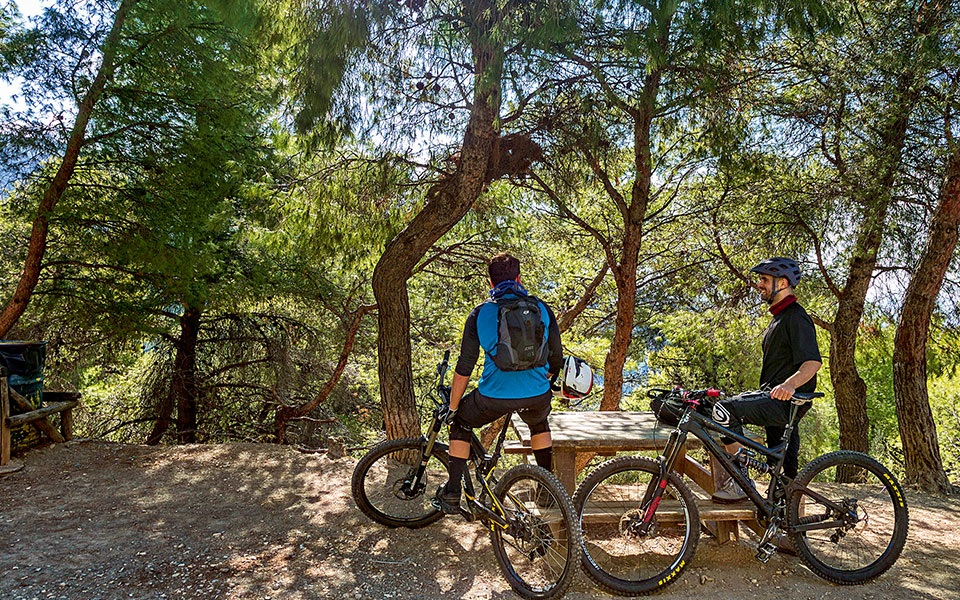
Ymittos
© Perikles Merakos
Biking through a richly diverse forest, exploring distinctive Byzantine monuments, pausing to enjoy a panoramic view… Ymittos, just a 20-minute trip from Athens, is the easiest of natural escapes for city-dwellers.
A mountain that many Athenians underappreciate, Mt Ymittos is a timeworn ridge whose lower slopes now are lapped by the rising tide of Athens’ urban development. Starting at the sea (near Glyfada and Voula), the mountain extends to Athens’ northern and eastern suburbs and constitutes, in the words of historian and writer Dimitrios Kambouroglou, “the screen separating the valley of spirit from the plain of spirits” – that is, an age-old division between Athens and the wine-growing districts of Attica.
Ymittos’ highest peak (1,026m), today topped with communications antennas, offers a superb view. Its atmospheric conditions were once an indicator for ancient Athenians seeking to predict the weather. On its slopes stood many rural sanctuaries; nowadays these are historic monasteries or publicly inaccessible caves – Koutouki in Peania is the only one set up for visitors.
Kaisariani Monastery is about 8k from Athens. Open Tue-Sun 8:00-14:30, admission €1, Asteriou Monastery is about 11k from Athens. Open Tue-Sun 6:00-13:00 & 17:30-21:00, Koutouki Cave is 26k from Athens. Open daily 8:30-14:30, admission €1.
Biking through a richly diverse forest, exploring distinctive Byzantine monuments, pausing to enjoy a panoramic view… Ymittos, just a 20-minute trip from Athens, is the easiest of natural escapes for city-dwellers.
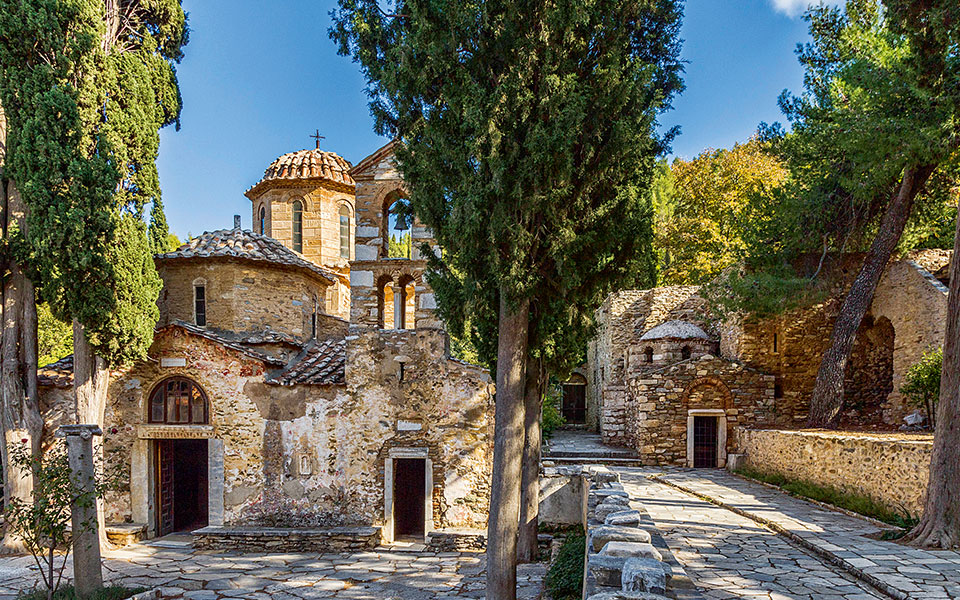
Kaisariani Monastery
© Perikles Merakos
The easiest Ymittos excursion is one that begins from Ano Kaisariani-Zografou and ascends to the top of the mountain, passing through Calabrian pine, cypress and carob. Either by car, bicycle, or on foot, you can enjoy a beautiful natural setting, visit the Kalopoula spring and most notably two fine historical monuments: the Byzantine Kaisariani and post-Byzantine Asteriou monasteries.
From the former, you can follow the path up to the intriguing Church of the Ascension (Analipsi). In about 15 minutes, you will arrive at the ruined Fragkomonastiro Church and the restored chapel of Taxiarches, where the view is breathtaking.
At the Athens English Comedy Club,...
Xenokratous Street in Kolonaki is one...
From Michelin-starred tasting menus to sushi...
On the Cycladic island of Tinos,...